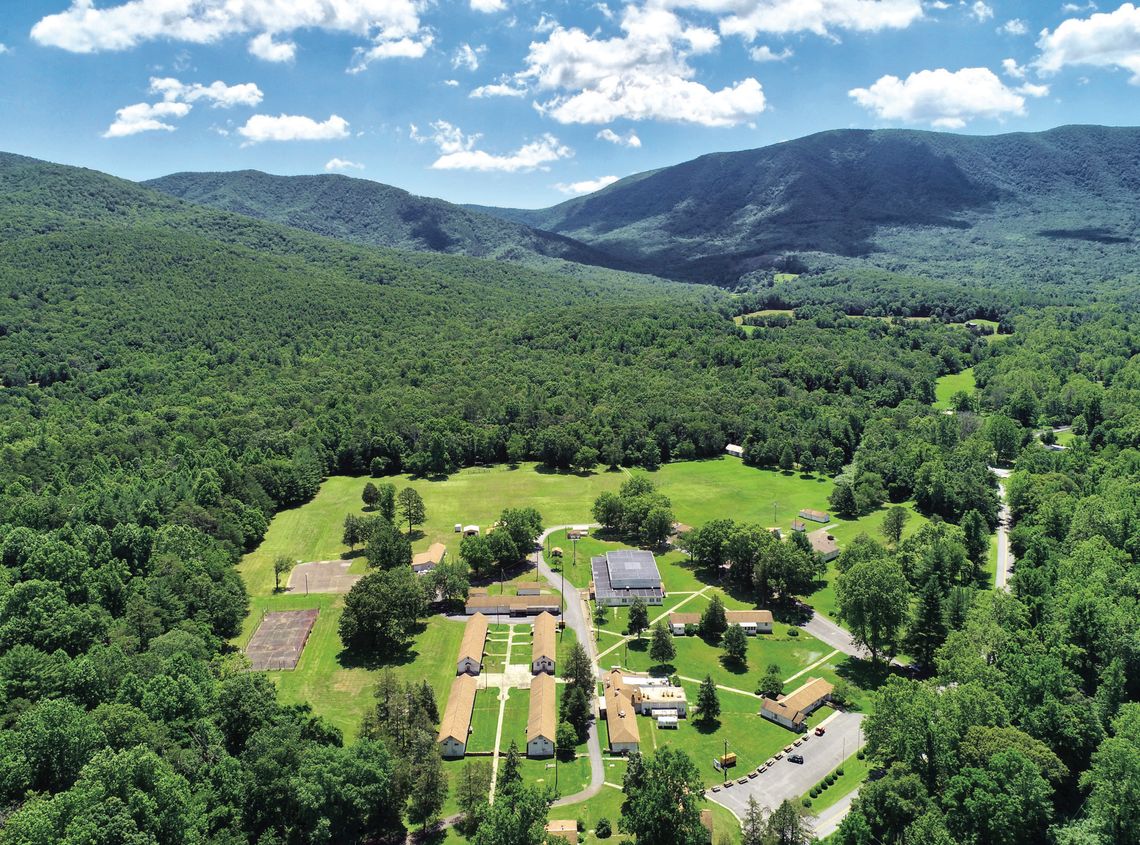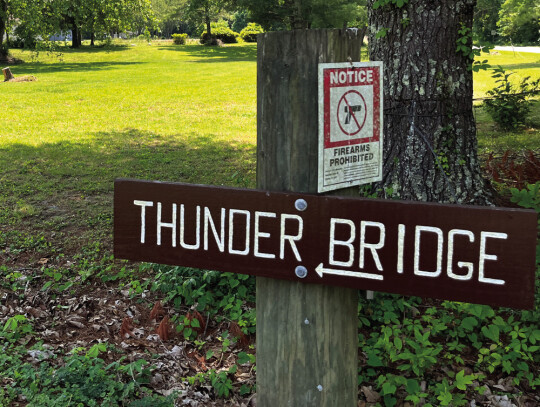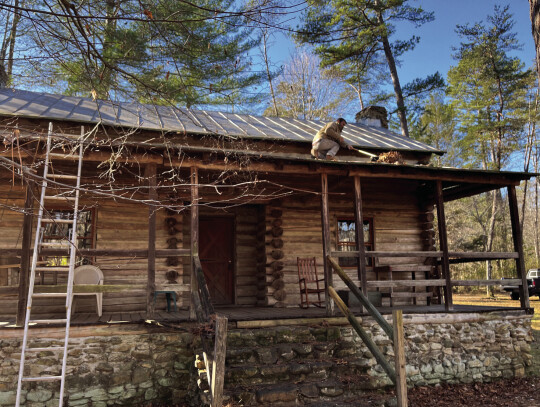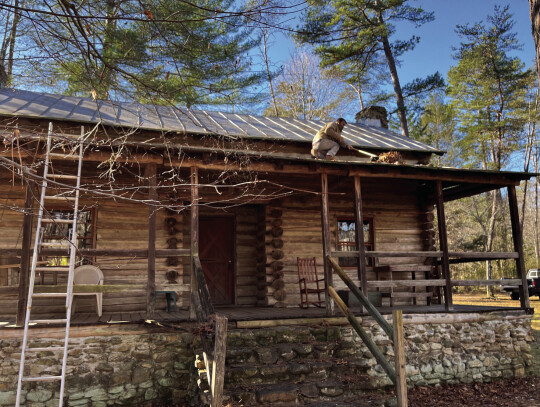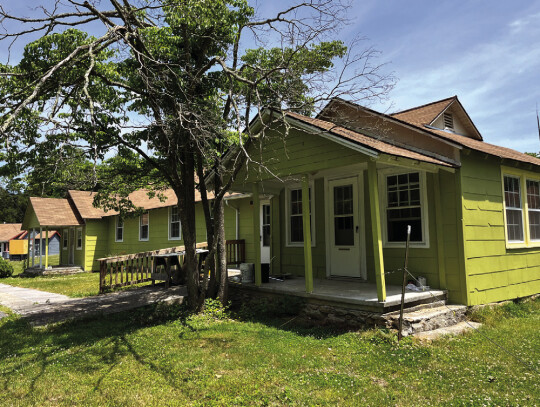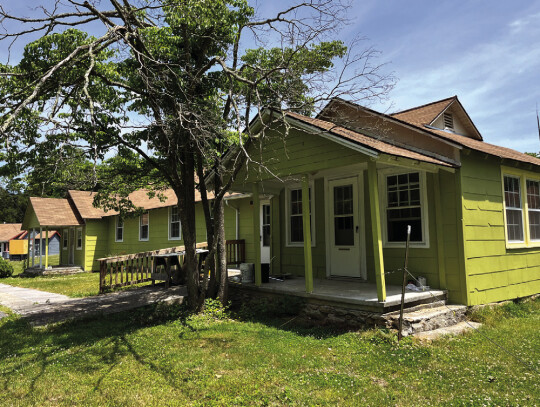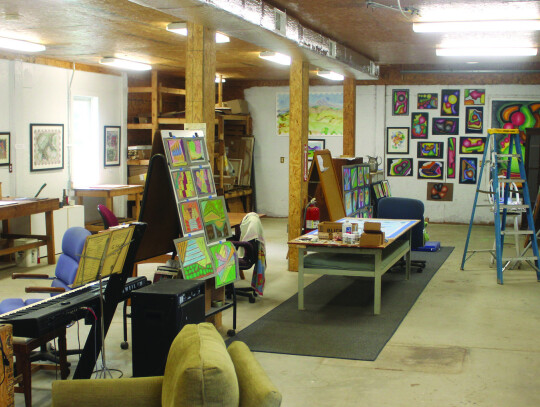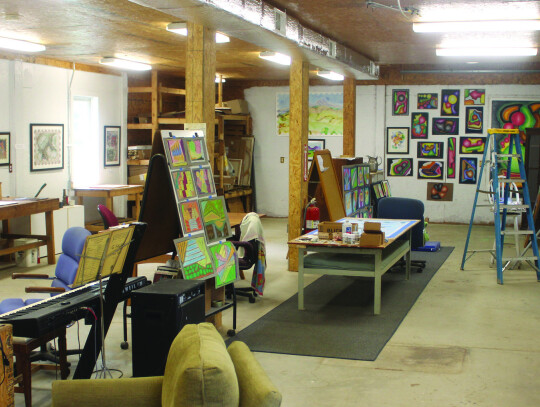Nestled in the heart of Arnolds Valley is a quiet, sprawling facility where once the vibrant noises and busy daily happenings of the Natural Bridge Juvenile Corrections Center and Camp New Hope were heard and seen. Closed down in 2009 after being in operation for some 60-plus years, the buildings and grounds sat vacant with no visitors except local wildlife.
In recent years, however, this has changed. The property eventually hit the realty market and, after seeing the place sit empty every time they passed by, local residents James and Karen Pannabecker, along with their son Adam, decided to purchase the facility. The Pannabeckers saw great potential in the old camp and boys home and have brought life back to the historic grounds.
They’ve renamed the facility, “Thunder BRidge.” The name reflects the property’s rich history and geographical location (Blue Ridge). The Civilian Conservation Corps men called their weekly newspaper “The BRidge.” The NBJCC boys built a large log cabin called “The BRidge.” Thunder Ridge, a section of the Blue Ridge, overlooks the property. The NBJCC boys attended “Thunder Ridge High School.” Their mascot was the Timber Wolves.
The Pannabeckers plan to create a community arts and culture center with studios and performance spaces for artists, writers, dancers, musicians, theater performers and more. Six of the buildings have already been converted into art studios.
Thunder BRidge Campground, formerly Camp New Hope, which opened in May 2022, focuses on spacious primitive sites – unlike most of today’s campgrounds that crowd as many people as possible onto the available acreage. Managed by Adam Pannabecker, the campground currently includes 11 tent sites, six RV sites, three screened cabins, two vintage log cabins, a well-appointed cottage – all served by a pavilion with a dining/recreation room, water, bathrooms, showers, reliable Internet service and electricity.
An open house this Saturday (see separate story) will provide access to many of the buildings, some of which the Pannabeckers have renovated, others in process, and still others awaiting inspiration. A half dozen spaces will be open for inspection by artists in search of a creative environment for pursuing their own work.
The property includes a large gymnasium that will become a concert and special events venue, as well as possibly a sports facility. An 8-acre pasture, with the other facilities, provides an ideal music festival location. The pasture includes two ballfields and an obstacle course. Ongoing renovations include several cottages that will be available for workshops and overnight guests.
While skeptics may have called it, “Pannabeckers’ Folly,” the facility’s new owners expect to preserve and enhance the historic property which has cycled from a Civilian Conservation Camp in the 1930s through a boys’ detention center at the forefront of juvenile justice reform and, now, into private ownership.
The NBJCC provided troubled teenagers with a high school education and skills to return to society as productive adults such as carpenters, woodworkers, masons, auto mechanics, barbers, gardeners and cooks. Visitors will see that the Pannabeckers have respected and preserved memories of this mission. The Virginia Department of Historic Resources has touted it as the best remaining example of a CCC camp. All of the CCC buildings remain, most in usable condition.
There are currently six artists, including James and Karen Pannabecker, working at the facility. The other artists with studios are Benjamin Frey, Celeste Simon, Krista Staton and Brinn Willis.
Frey and Simon have been lifelong professional artists. Willis, who teaches photog- raphy at Southern Virginia University, writes this about her art: “No instant playback or presets or post process … just mixing chemistry, making film, and the most honest portraits with a simple box and bellows.” Staton, with extensive experience as an art educator, recently stepped back from teaching to dedicate time and space to her own art-making.
Karen Pannabecker, recognized for her portraits of people and animals, now focuses on welded sculptures. James Pannabecker continues to construct postage stamp collages. Studios will also house work by guest artists Jonah Brown (painting), Susan Brady (mixed media), and Eben Ostby (photography).
“The Thunder BRidge project may take several lifetimes to complete,” says James Pannabecker of the ongoing work at the facility.” But, in the meantime, the Pannabeckers and the other artists are doing exactly what they love to do.
Editor’s note: Karyn Gardner, Arnolds Valley correspondent for this newspaper, wrote this article in collaboration with James Pannabecker.

